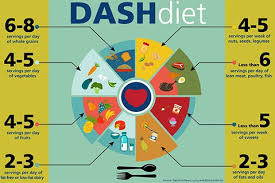It is easy to ignore symptoms of CVD and think they are nothing or related to something else. If you are having signs of a heart attack such as chest pains, shortness of breath, dizziness, pain in the arms, neck or jaw you need to seek immediate help (Medline plus, 2009). The sooner you get help the better it is.
If you are having symptoms of heart disease or have a
family history of heart disease it is important to see your physician and talk
about it. They can help you confirm a diagnosis and recommend treatment
options.
At the appointment you will need to fill out a medical
history and symptoms. It is important to be honest about things even if you
think it will make you look bad (AHA, 2017). Your blood pressure will be taken
along with your height and weight, also the doctor will perform a physical
exam. The doctor may also order some blood work to check levels of important
substances such as electrolytes and cholesterol. A chest X-ray may also be done
to determine if heart is enlarged or if there is congestion in the lungs (AHA,
2017).
Along with these tests the doctor may determine you need further testing.
Along with these tests the doctor may determine you need further testing.
·
EKG- records further electrical signals in
heart
·
Holter
monitor- continuous EKG usually 24hours
·
Echocardiogram- ultrasound of your heart
·
Stress test- checks your heart during
exercise to see how it responds
·
Cardiac catheterization- is an invasive
procedure where a tube is inserted into your arm or leg and goes to your heart-
they then inject dye to see the blood flow through the heart
·
CT (cardiac computerized tomography) scan-
scan that looks at head and chest for abnormalities.
·
Cardiac magnetic resonance imaging (MRI)-
takes pictures of heart
Once you have been
diagnosed the treatment will vary depending on your condition. Treatment
options usually include the following:
·
Lifestyle changes- develop a regular
exercise routine, stop smoking, change diet to low fat and low sodium limit
alcohol intake, maintaining healthy body weight
·
Medications- sometimes lifestyle changes aren’t
enough to treat your heart condition. There are several different types and
your physician will determine what’s best for you
·
Medical procedures or surgery- medications
or lifestyle changes sometimes aren’t enough
Some
of the medications used include an aspirin for its antiplatelet activity. Beta
blockers are also used they block the action of adrenaline on the heart and
help the heart beat more efficiently. Calcium channels are also used to help
the heart muscles contract and pump more efficiently. Nitrates are used to
increase the blood flow to the heart muscle by dilating the arteries.
Depending
on the extent of the blockage an angioplasty may be performed with a stent
placement. A coronary artery bypass graft (CABG) may be necessary people
sometimes also call this an open heart surgery.
American
Heart Association (2017, May 27). Common Tests for Heart Failure. Retrieved
from, http://www.heart.org/HEARTORG/Conditions/HeartFailure/DiagnosingHeartFailure/Common-Tests-for-Heart-Failure_UCM_306334_Article.jsp#.WpyWZKinHIU
Mayo Clinic (2018, February 3). Heart Disease. Retrieved
from, https://www.mayoclinic.org/diseases-conditions/heart-disease/symptoms-causes/syc-20353118
NHI
MedlinePlus (2009). Heart Disease: Symptoms, Diagnosis, Treatment. Retrieved
from, https://medlineplus.gov/magazine/issues/winter09/articles/winter09pg25-27.html
















